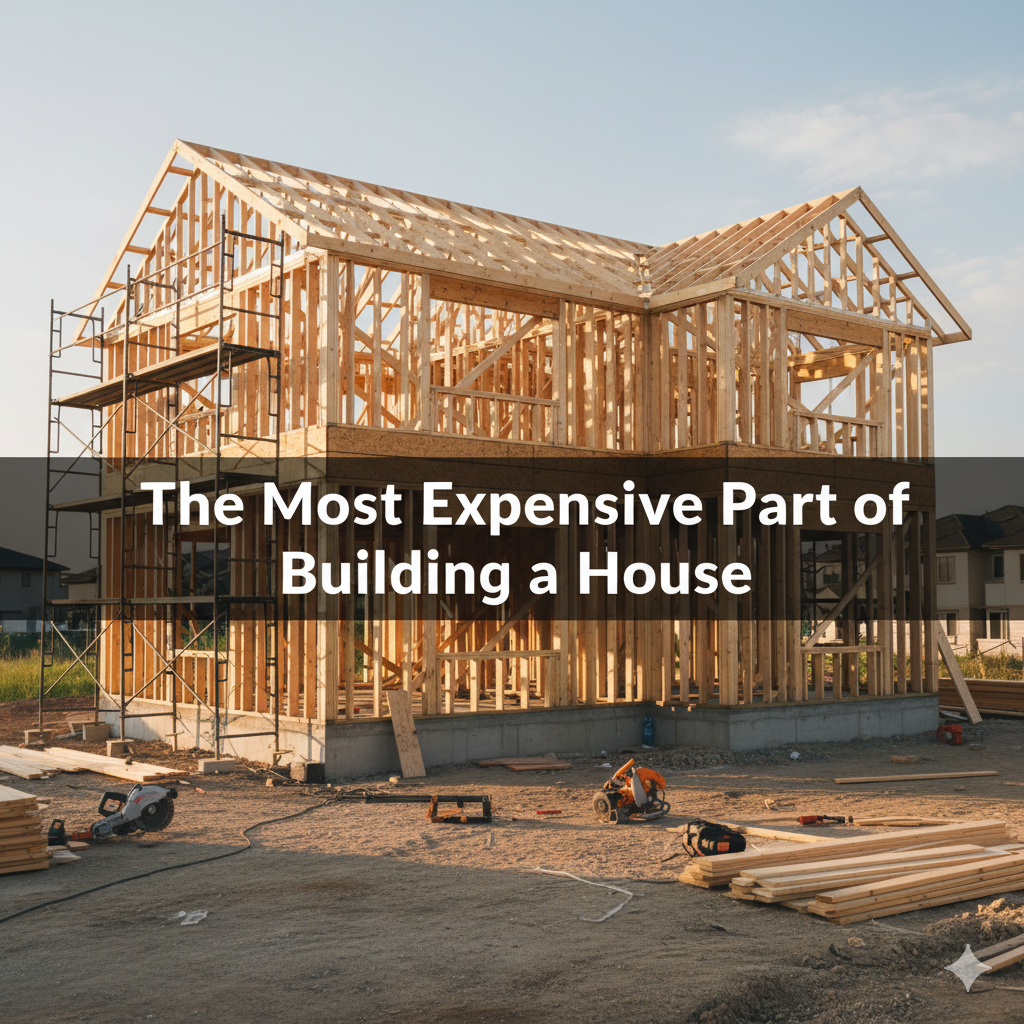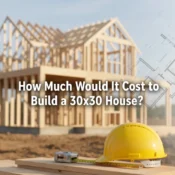
What is the Most Expensive Part of Building a House?
Introduction
Building a new home is one of the most exciting yet financially significant investments most people will ever make. While every stage of construction requires planning, budgeting, and coordination, one of the most common questions future homeowners ask is: “What is the most expensive part of building a house?”
The answer isn’t as simple as one line—it depends on the size of the house, location, design choices, and local labor and material costs. In Fremont, NE, homeowners often encounter challenges related to fluctuating lumber prices, specialized labor availability, and long-term design considerations. In this article, we’ll break down the most costly parts of home construction, why they’re so expensive, and how working with an Expert House Construction Contractor in Fremont can save you money and time.
The Land: A Major Starting Cost
Before you even begin construction, one of the most expensive parts is acquiring land. In areas like Fremont, prices vary depending on the neighborhood, school districts, and proximity to amenities. Preparing the land—grading, clearing trees, and installing utilities—adds significant costs.
- Land clearing: $1,500–$5,000+ depending on terrain
- Utility setup (water, gas, sewer, electric): $10,000–$30,000
- Soil testing and site surveys: $2,000–$5,000
While not technically part of the structure, land costs influence the overall budget heavily.
The Foundation: Where Stability Begins
The foundation is one of the first and most critical construction expenses. Whether you opt for a slab, crawlspace, or full basement, costs can escalate quickly.
- Concrete slab foundation: $5,000–$15,000
- Basement foundation: $30,000–$70,000 depending on waterproofing and finishing
Why so expensive? Because the foundation requires heavy labor, excavation, and specialized materials. Mistakes here can lead to severe structural problems later.
Framing: The Skeleton of the Home
Framing is often the single most expensive step in house construction. It typically accounts for 15–20% of the total building cost.
- Lumber costs fluctuate dramatically based on market trends.
- A 2,000 sq. ft. home can cost $30,000–$60,000 just for framing.
- This stage includes floors, walls, trusses, and roof structure.
Framing is labor-intensive, material-heavy, and directly impacts how the rest of the house will function. For many homeowners, this is the “big ticket” part of construction.
Roofing: Essential Protection
Your roof is not just an aesthetic feature—it protects everything inside. Roofing costs vary depending on material choice:
- Asphalt shingles: $7,000–$15,000
- Metal roofing: $15,000–$30,000
- Tile/slate roofing: $25,000–$50,000+
Though costly, a durable roof saves thousands in future repairs and energy costs.
Plumbing, Electrical, and HVAC: The Core Systems
While not always visible, the internal systems of a home—plumbing, electrical, and HVAC—are incredibly costly and absolutely essential.
- Plumbing: $10,000–$20,000
- Electrical: $10,000–$25,000
- HVAC: $7,000–$15,000
These systems require skilled licensed contractors, strict code compliance, and high-quality materials. Cutting corners here can be disastrous.
Interior Finishes: Where Costs Escalate Quickly
While structural elements dominate the early stages, many homeowners are surprised that finishes can quickly surpass expectations.
- Flooring: $5,000–$30,000
- Cabinetry & countertops: $10,000–$50,000
- Painting: $5,000–$15,000
- Appliances & fixtures: $8,000–$20,000
Finishes are where homeowners often “upgrade” their dream home, sometimes doubling initial estimates.
Labor Costs: The Hidden Expense
Materials often get the spotlight, but labor is one of the most expensive parts of building a home. In Fremont, skilled labor shortages can push costs even higher. General contractors, electricians, plumbers, framers, and finish carpenters all add up to 30–50% of the overall construction budget.
Which Part is Truly the Most Expensive?
When considering structural importance and overall cost share, framing and finishes are usually the most expensive. Framing provides the bones of the house, while finishes determine the look, comfort, and value. Together, they often represent 40–50% of total construction costs.
However, costs can shift based on personal decisions. Someone opting for high-end finishes might find their interiors are more expensive than their structural build.
How to Control Costs in Fremont, NE
Working with an Expert House Construction Contractor in Fremont is the smartest way to manage your budget. A professional ensures:
- Efficient material sourcing at competitive rates
- Local subcontractor connections to reduce labor delays
- Accurate project timelines to avoid costly overruns
- Guidance on when to save and when to splurge
By balancing quality and budget, contractors help homeowners achieve their dream home without financial nightmares.
Conclusion
Building a home is never cheap, but understanding the costliest parts of the process helps homeowners plan better. From land acquisition to finishes, each stage has unique expenses. While framing and finishes typically dominate the budget, plumbing, electrical, HVAC, and roofing are equally vital.
In Fremont, NE, where construction costs vary seasonally, working with an Expert House Construction Contractor in Fremont provides peace of mind and financial clarity. By making smart choices at every step, you can enjoy your dream home without blowing your budget.
10 FAQs
Q1. What is usually the most expensive part of building a house?
The framing and finishes typically account for the largest share of costs, sometimes 40–50% of the budget.
Q2. How much does it cost to build a house in Fremont, NE?
On average, building a home can range from $150–$250 per sq. ft., depending on design and material choices.
Q3. Does land cost count as part of building expenses?
Yes, land purchase and preparation significantly influence overall project costs.
Q4. Why is framing so expensive?
Framing requires large amounts of lumber, fluctuating material prices, and skilled labor.
Q5. Can I save money on finishes?
Yes, choosing mid-range finishes instead of luxury upgrades can save tens of thousands.
Q6. Is it cheaper to build or buy a house in Fremont, NE?
It depends. Building allows customization but may cost more upfront. Buying can be cheaper but limits personalization.
Q7. What are hidden costs in house construction?
Permits, inspections, land prep, utility hookups, and change orders often surprise homeowners.
Q8. How can I reduce labor costs?
Hiring a reliable contractor who manages subcontractors efficiently can minimize wasted time and expenses.
Q9. Do roofing materials make a big price difference?
Yes, asphalt shingles are more affordable, while slate or metal roofing can cost several times more.
Q10. Should I hire a local contractor in Fremont?
Absolutely. A local contractor understands regional pricing, building codes, and subcontractor availability.
All Categories
Recent Posts
Can You Build a House for $500k?
Can You Build a House for $80,000?
How Much Would It Cost to Build a 30×30 House?
Tags
MON-SAT 8:00-9:00
+91 69 863 6420



